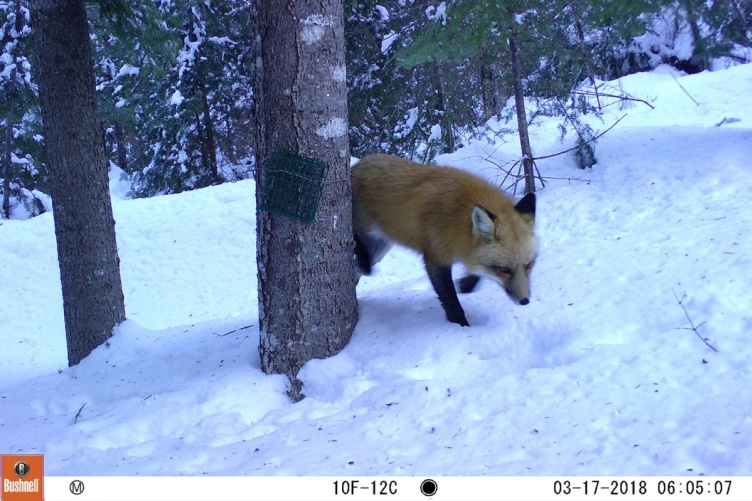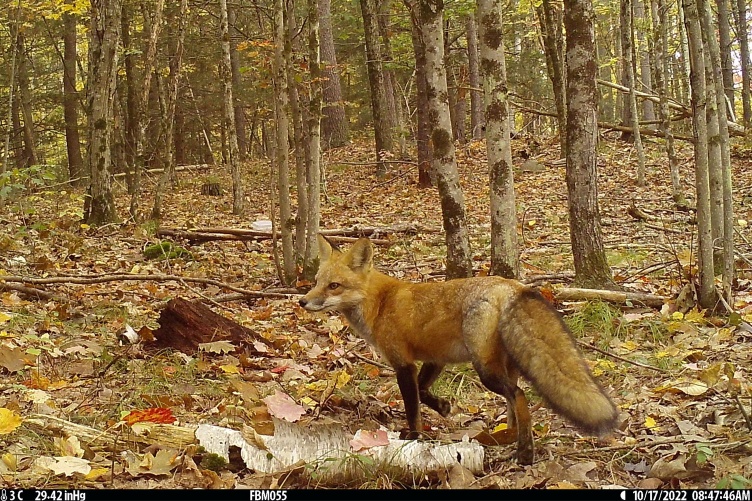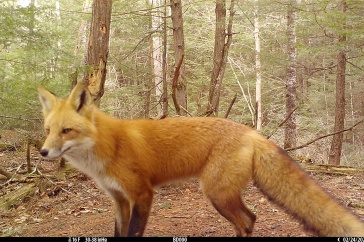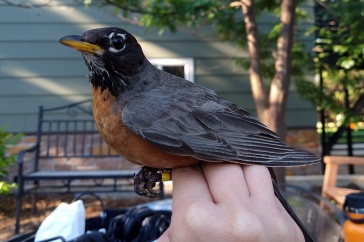Key Research Finding
In the winter, red fox populations are more limited by climatic factors, specifically snow depth, rather than by prey availability or competition from other predators.
Key Terms
Known best for their cunning behavior, red foxes play key ecological roles within their environments and in disease pathology. The animals disperse seeds for plant and tree regrowth in New England forests through their scat and help limit disease spread by controlling rodent species—such as mice and chipmunks—that can carry bacteria that causes Lyme disease. Maintaining fox populations in northern New England is important to resilient ecosystems, but little is known about why their numbers fluctuate. Recent research from the New Hampshire Agricultural Experiment Station examined how red fox populations during Maine winters are affected by competition from coyotes, weather variability, and the presence of snowshoe hare prey—factors key to developing effective land management strategies in the region.
“It’s important to study red foxes because they play several critical ecological roles and are an important game species,” explained Andrew Butler, a Ph.D. candidate in the Natural Resources and the Environmental Studies program at UNH’s College of Life Sciences and Agriculture. “In ecology, many studies focus on only top-down or bottom-up factors. However, many species, such as red foxes, must find a way to navigate both pressures to survive, making them a good model to investigate how these factors simultaneously influence such species.”
Camera Traps in Animal Ecology
Definition: Camera traps are motion-activated cameras that are used to capture images or video of wildlife.
Characteristics of wildlife camera traps include:
- Motion-trigger sensors that activate when an animal moves in front of the camera.
- Infrared sensors to detect animals even in darkness.
- Baited to encourage animals to come into view of the cameras (use of bait may depend on research study’s particular goals).
Camera traps are a valuable tool to track and monitor wildlife that does not require direct interaction with the animals and does not affect animal behavior. Moll has previously used camera traps to study how animals adapt to suburban developments, and more generally as a means of inexpensively and efficiently monitoring New Hampshire wildlife populations.
From 2017-2020, Station scientist and assistant professor of natural resources and the environment Remington Moll worked with colleagues from the University of Maine to use camera traps—motion-activated cameras that are used to capture images or video of wildlife—for tracking red foxes, snowshoe hares (which red fox prey on) and coyotes (a competitor of red foxes), across a roughly 60,000-square-kilometer study area in central and northern Maine. Coyotes, as competitors and potential predators of foxes, are a top-down ecological factor, and snowshoe hares, as a major prey of foxes, are a bottom-up ecological factor, so researchers could compare the impact of each factor on foxes.
The study produced some unexpected results. While the researchers initially anticipated that coyote populations would negatively affect fox populations due to competition between these two species, they discovered a positive relationship between the number of coyotes and the number of foxes in an area instead, potentially because foxes scavenge on food scraps left by coyotes.
Of most interest, climate-related factors exerted the greatest influence on fox populations, more than prey availability or interspecies competition. For example, greater snow depths were associated with decreased fox populations, likely due to how greater amounts of snow impede fox movements and their ability to capture prey. The impact of climatic factors such as snowfall is especially important to consider in land management and conservation planning for red foxes, as climate change is predicted to decrease and make more unpredictable Maine’s snowfall—a change that could cause large swings in fox colony populations, creating a ripple effect on other species within the ecosystem.
According to Butler, “In temperate ecosystems like Maine’s, winters – especially severe ones – can have big impacts on wildlife populations. Over such a large geographic area we would expect to see climatic variables become more important.”
“Areas with snow depths around one meter in depth had a very low probability of being colonized by red foxes; though as snowfall is predicted to decrease in the region, snow depth may become less of a limiting factor in the future,” he added.
Climate has traditionally been viewed as having a much larger impact on lower food chain animals than on carnivores, but Moll and Butler’s research shows that, especially in the winter, carnivores can also be limited by climatic factors like temperature, humidity and precipitation. This method of considering seasonal weather changes can be applied to the study of other carnivore species, explained Moll and Butler, to learn how these factors can impact population levels. Consideration of these possible impacts will support more effective conservation planning for red foxes and other smaller carnivores that have widespread impacts on their ecosystem.
“Previous research has shown that coyotes – which are not native to New England – can negatively affect red foxes by competing with them or killing them outright,” explained Moll. “This study emphasizes how seasonality impacts this relationship and suggests that interspecies competition might not be as strong under the harsh conditions that accompany New England winters."
Moll added that their current studies, also supported by the NH Agricultural Experiment Station, will follow up on the findings of this previous study by examining carnivore interactions across multiple years and seasons, shedding further light on the dynamics of subordinate carnivores and their prey and competition.
This material is based on work supported by the NH Agricultural Experiment Station through joint funding from the USDA National Institute of Food and Agriculture (under award numbers 1024128 and 7003422) and the state of New Hampshire. Additional funding came from the Maine Department of Inland Fisheries and Wildlife, the USDA National Institute of Food and Agriculture (McIntire–Stennis Project number ME0-41913), the Cooperative Forestry Research Unit, the Honors College Charlie Slavin Research Fund, and the Center for Undergraduate Research at the University of Maine.
This work is co-authored by Andrew Butler, Bryn Evans, Alessio Mortelliti and Remington Moll.
You can read the published article, Forest and snow rather than food or foe limit the distribution of a generalist mesocarnivore in winter, in Ecosphere.
-
Written By:
Maeve Gifford | UNH College of Life Sciences and Agriculture | Maeve.Gifford@unh.edu



















































